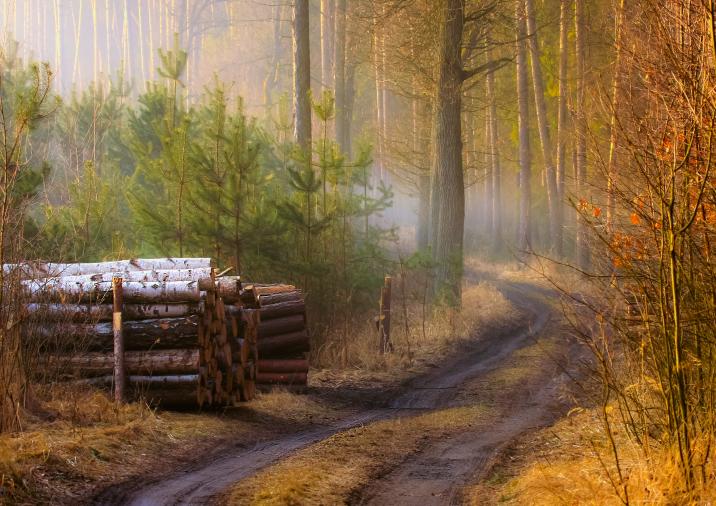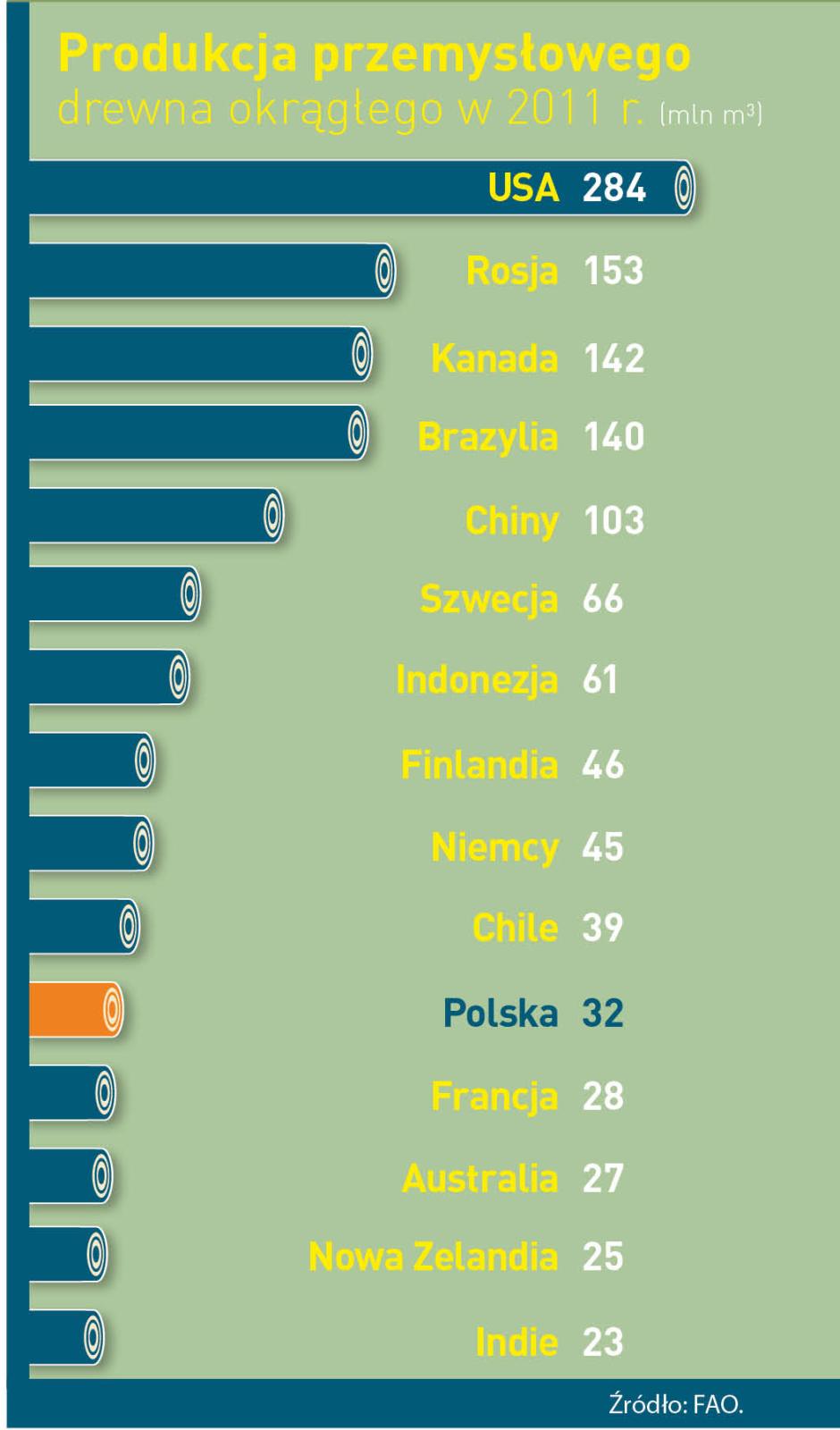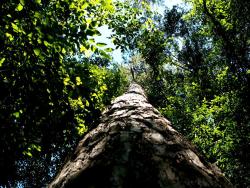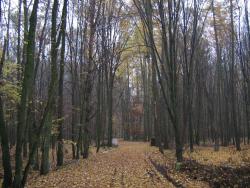 Asset Publisher
Asset Publisher
Polish hit
Polish products made of wood – furniture, window and door frames, yachts or paper and packages – these are real hits of the market.
Our country is the is the 10 largest producer of furniture and the 4 largest furniture exporter in the world. Wood industry sells abroad goods of its approximate value of 45 million zl annually, what constitutes 10 % of the whole Polish export. The measurement of the essential role of forestry and timber based sector in our management is that, it works out about 2 % of GDP (Gross Domestic Product). Not only it gives work to thousands of people, but it is also an engine of investment and of development of innovative technologies. From the beginning of transformation, it drew foreign capital of its value over 30 million zl.
Forest gives work
The State Forests belong to the leading group of employers in Poland. However, both forest and timber provide for workers with several thousand of Forestry Services Companies, which within the contract of mandate deal with, among others, planting trees and their nursing, wood logging and its transportation. And above all cooperate with people employed in several dozen thousand of companies creating wood and furniture industry and paper manufacture. Summing up, it gives as many as 375 thousand of Poles altogether. Statistically, every hundred inhabitant of our country works in the sector connected with forestry and wood processing.
Among private companies of forestry and timber based sector, there are also big companies with the share of foreign capital , and big and medium sized indigenous companies, but 9 of 10 companies in this sector are small plants employing less than 10 people. These are often family companies, cultivating multigenerational traditions connected with forestry and working in less developed regions of the country. There, forestry and wood industry, as well as agriculture constitute the basis of maintaining hundred thousand of families. As many as 600 % of all working places in the forest and wood based sector are located within rural areas.
Forest and wood based sector works out about 2 % of Polish GDP (Gross Domestic Product).
- 2 % of Polish GDP works out forest and wood based sector .
- Poland takes 4 place as the largest furniture exporter and 10 place as the largest producer of furniture.
- 50 % of paper and 9 of 10 pieces of furniture produced in Poland is exported abroad
- The value of annual export of Polish goods of wood and furniture industry and paper manufacture equals 45 billion zl (it is 10 % of the whole export).
- 30 billion zl , as direct foreign investments, have been drown since 1990 by Polish wood based sector (5,5 % of all).
- 100 kg of paper is used annually by statistic Pole (an average of UE is 160 kg, for USA – 230 kg).
Source: E. Ratajczak „Potencjał gospodarczy przemysłów opartych na drewnie i perspektywy ich rozwoju (Economic performance of wood – based industries and perspectives of their development)", GUS, Warszawa 2012.
 Asset Publisher
Asset Publisher
 Asset Publisher
Asset Publisher
Zasoby leśne
Zasoby leśne
Nadleśnictwo Puławy zarządza gruntami Skarbu Państwa o powierzchni 16,1 tys. ha, w tym gruntami leśnymi o powierzchni 15,6 tys. ha, na terenie czterech powiatów: puławskiego, ryckiego, lubelskiego i opolskiego.
Nadleśnictwo Puławy zarządza gruntami Skarbu Państwa o powierzchni 15,7 tys. haObszar nadleśnictwa położony jest w zasięgu województwa lubelskiego, czterech powiatów: lubelskiego, puławskiego, opolskiego i ryckiego, 18 gmin wiejskich i 7 gmin miejskich – Puławy, Kazimierz Dolny, Ryki, Dęblin, Nałęczów, Konskowola, Kurów. Powierzchnia terytorialnego zasięgu działania nadleśnictwa wynosi ok. 151176 ha. Lesistość obszaru wynosi 22,41%. Lasy własności prywatnej stanowią ok. 40,4% wszystkich lasów znajdujących się w zasięgu działania nadleśnictwa.
Powierzchnia Nadleśnictwa Puławy w powiatach (wg stanu na dzień 31.12.2023 r)
| Powiat | Powierzchnia ogółem (ha) | Powierzchnia leśna (ha) |
| Lubelski | 599 | 540 |
| Opolski | 56 | 56 |
| Puławski | 11603 | 11260 |
| Rycki | 3660 | 3588 |
Pod względem fizjologicznym są to tereny po pograniczu Niziny Mazowieckiej, Wyżyny Lubelskiej i Równiny Radomskiej, rozdzielonych pradolinami Wisły i Wieprza. Takie położenie sprawia, że występują tu bardzo różnorodne formy ukształtowania terenu - od płaskich równin po wysoczyzny pocięte głębokimi wąwozami. Także różnorodna budowa geologiczna sprawia, że tutejsze gleby - a co za tym idzie również szata roślinna - prezentują dużą zmienność i są to biotopy 14 typów siedliskowych lasów niżowych.
Dominującymi typami siedliskowymi w nadleśnictwie są: Bśw 29,79%, LMśw 22,88%, Lśw 19,19% i BMśw 18,61%.
| Typ siedliskowy lasu | Powierzchnia w ha | Udział % |
| Bśw | 4453,63 | 29,79 |
| BMśw | 2783,89 | 18,61 |
| LMśw | 3421,65 | 22,88 |
| Lśw | 2868,75 | 19,19 |
| Ol | 455,64 | 3,05 |
| Pozostałe | 968,31 | 6,48 |
Drzewostany nadleśnictwa tworzą około 33 gatunki drzew, 16 występuje jako gatunki panujące.
Głównym gatunkiem tworzącym drzewostany w nadleśnictwie jest sosna. Drzewostany z panującą sosną zajmują 74,02% powierzchni i dają 74,02% zasobności. Drugim gatunkiem jest dąb. Udział powierzchniowy drzewostanów dębowych wynosi 13,48% a zasobność 15,68%. Kolejnym gatunkiem jest brzoza z udziałem powierzchniowym 8,61% i pod względem zasobności 6,36%. Grab jako gatunek panujący zajmuje 1,65% powierzchni i 1,51% zasobów.
Udział pozostałych gatunków nie przekracza 0,5 % udziału powierzchni leśnej.
| Gat. | Pow.% | Zasob.% |
| So | 74,02 | 74,02 |
| Db | 13,48 | 15,68 |
| Brz | 8,61 | 6,36 |
| Ol | 0,70 | 0,93 |
| Gb | 1,65 | 1,51 |
| Poz. | 1,54 | 1,50 |












